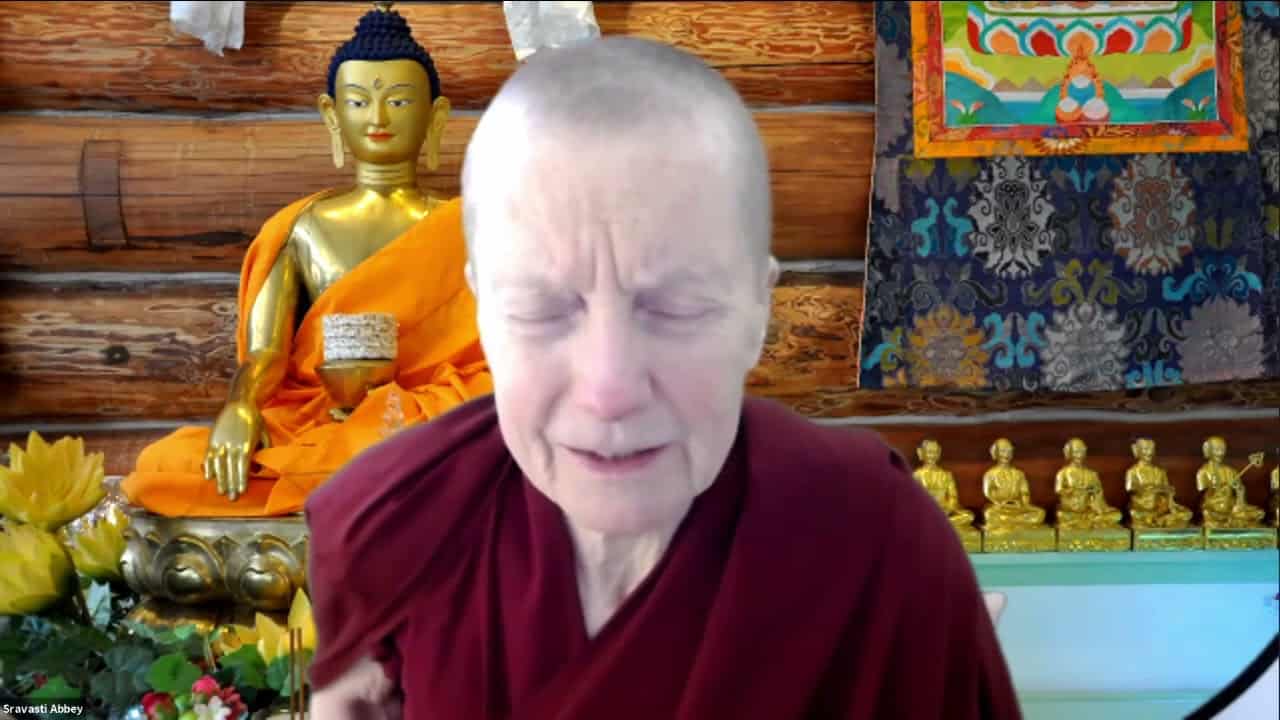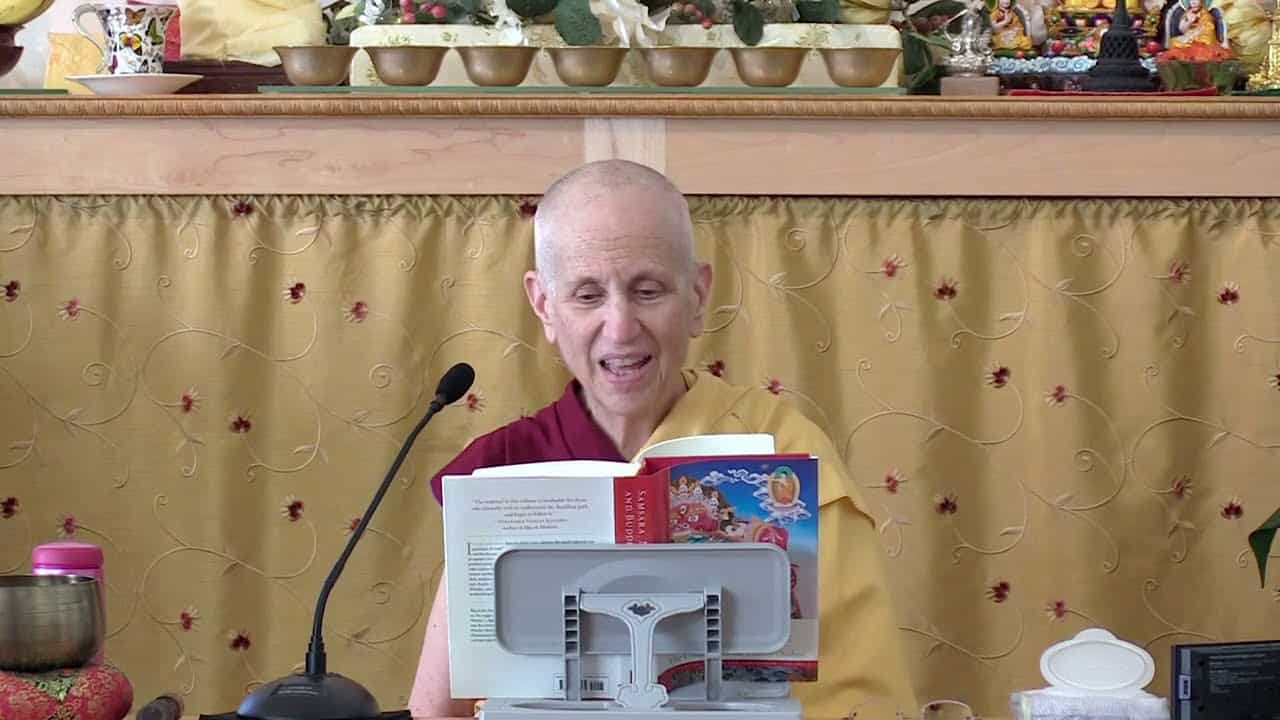How to study the teachings
01 Samsara, Nirvana, and Buddha Nature
Part of an ongoing series of teachings (retreat and Friday) based on the book Samsara, Nirvana, and Buddha Nature, the third volume in The Library of Wisdom and Compassion series by His Holiness the Dalai Lama and Venerable Thubten Chodron.
- Background for the series
- How to approach learning Buddhism
- Overview of the topics covered
- The four truths and 12 links of dependent origination
- Liberation and full awakening
- Mind and its potential
- Six factors to keep in mind
- Analogy of patient, doctor, medicine, cure
- Curing the illness is a collaborative process
- Practicing consistently, having humility
Samsara, Nirvana, and Buddha Nature 01: How to Study the Teachings (download)
Contemplation points
- How is the approach to learning Buddhism different from learning secular material?
- Venerable Chodron said, “Practicing the Dharma is a process of building character, of making ourselves into certain kinds of people with a compassionate motivation and the kind of wisdom to help others. Because this is a gradual process, our teachers don’t expect us to learn and understand everything the first time. The idea is that we hear the teachings many times and each time we hear them, our minds understand it at a different level.” Spend some time considering this. How have you found this to be true in your own practice? How might this help you have some patience with your spiritual progress?
- Motivation is the most important part of an action. Why?
- What are the six factors that help us cultivate a beneficial motivation? How do each of these support spiritual practice?
- If we don’t respect the teacher and the Dharma, we won’t apply the teachings. Why is respect a necessary part of spiritual practice? Has a lack of respect for teachers or the teachings been a struggle for you at any time? What keeps/has kept you from having respect for the teacher and Dharma?
Venerable Thubten Chodron
Venerable Chodron emphasizes the practical application of Buddha’s teachings in our daily lives and is especially skilled at explaining them in ways easily understood and practiced by Westerners. She is well known for her warm, humorous, and lucid teachings. She was ordained as a Buddhist nun in 1977 by Kyabje Ling Rinpoche in Dharamsala, India, and in 1986 she received bhikshuni (full) ordination in Taiwan. Read her full bio.


